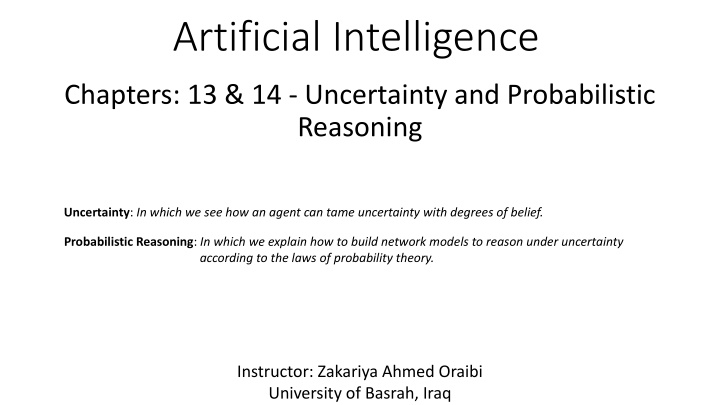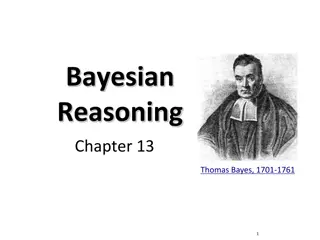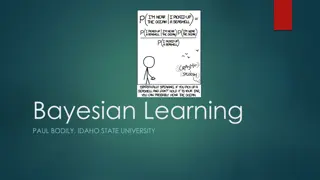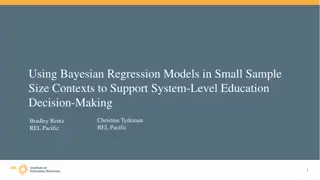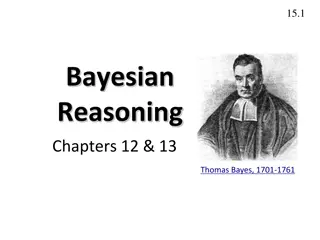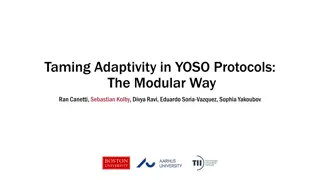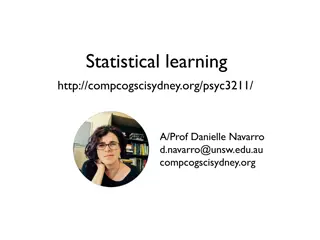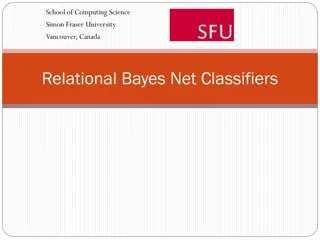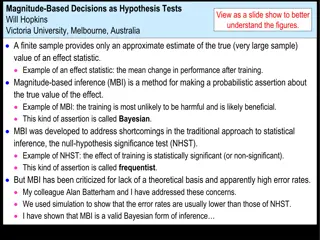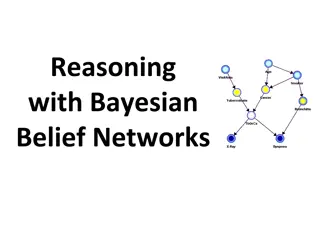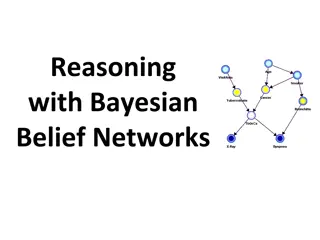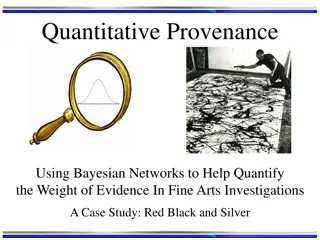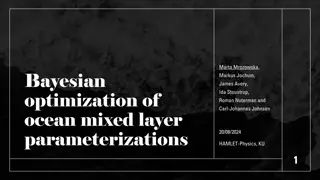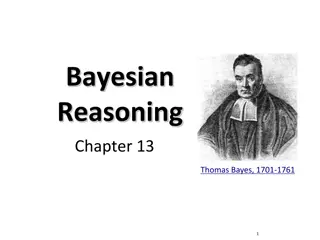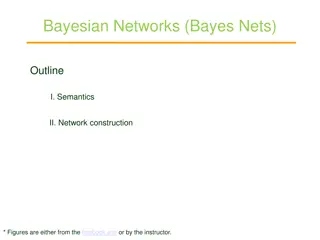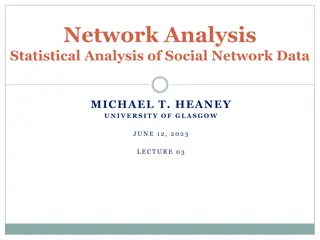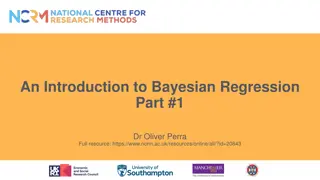Taming Uncertainty through Bayesian Networks
In Chapters 13 and 14 of Artificial Intelligence, explore how agents handle uncertainty with degrees of belief and probabilistic reasoning. Discover the use of probability theory in building network models to reason under uncertainty. Delve into topics like conditional probabilities, Bayesian networks, and more, illustrated with examples and discussions. Understand how uncertainty is managed and how logic can be applied in uncertain scenarios.
Download Presentation

Please find below an Image/Link to download the presentation.
The content on the website is provided AS IS for your information and personal use only. It may not be sold, licensed, or shared on other websites without obtaining consent from the author.If you encounter any issues during the download, it is possible that the publisher has removed the file from their server.
You are allowed to download the files provided on this website for personal or commercial use, subject to the condition that they are used lawfully. All files are the property of their respective owners.
The content on the website is provided AS IS for your information and personal use only. It may not be sold, licensed, or shared on other websites without obtaining consent from the author.
E N D
Presentation Transcript
Artificial Intelligence Chapters: 13 & 14 - Uncertainty and Probabilistic Reasoning Uncertainty: In which we see how an agent can tame uncertainty with degrees of belief. Probabilistic Reasoning: In which we explain how to build network models to reason under uncertainty according to the laws of probability theory. Instructor: Zakariya Ahmed Oraibi University of Basrah, Iraq
Uncertainty and Logic - In logic, every variable may be either true or false. - These variables represent events. Ex: rain = true if it is raining. - Agents (human or expert systems) can not tell if these variables are true or false for sure. - In this case, probability measure is used to express agent s beliefs. - Ex: if rain = 0.8 that means, we believe that its raining in a probability of 80%.
Uncertainty and Logic - - - - - - - probabilities of the some other events? (dependency). - Example: if alarm sounding has been observed, what is the probability that burglary has occurred? - If we have n binary variables in the problem, then 2n-1 numbers are needed to define the complete probability distribution among 2n possible states. This is: - 1- Too many!. - 2- Not all probabilities are necessary (independent probabilities). Let X and Y be propositions, then: X Y is conjunction of X and Y. X Y is disjunction of X and Y. ~X is negation of X. P(X) denotes the probability that X is true. P(X|Y) is the conditional probability that X is true given Y is true. The main question: given that some events have been observed, what are the
Uncertainty and Logic Bayesian Networks: provide an elegant way of declaring how things depend on other, and what things are independent of each other. - Note that burglary is independent from lightening. - In Bayesian network, the conditional probability of every non-root node X is of the form: P(X|states of X s parents) - Sensor has two parents: burglary and lightning. There are four possible combined states of the two parents: - burglary and lightning - burglary and lightning - burglary and lightning - burglary and lightning
Uncertainty and Logic Bayesian Networks: provide an elegant way of declaring how things depend on other, and what things are independent of each other. So, the complete specification of the Bayesian Network can be: Note: we used 10 numbers instead of 25-1 = 31, hence, we saved 21 numbers! (good compaction).
Uncertainty and Logic Conditional probability: Given propositions X and Y where P(Y) 0, the conditional probability, or posterior probability, of a given Y denoted P(X|Y), is defined as: Baye s Rule: Example: If we know that P(alarm|burglary) = 0.5, P(burglary) = 0.1, and P(alarm) = 0.15. Can we compute P(burglary| alarm)?
